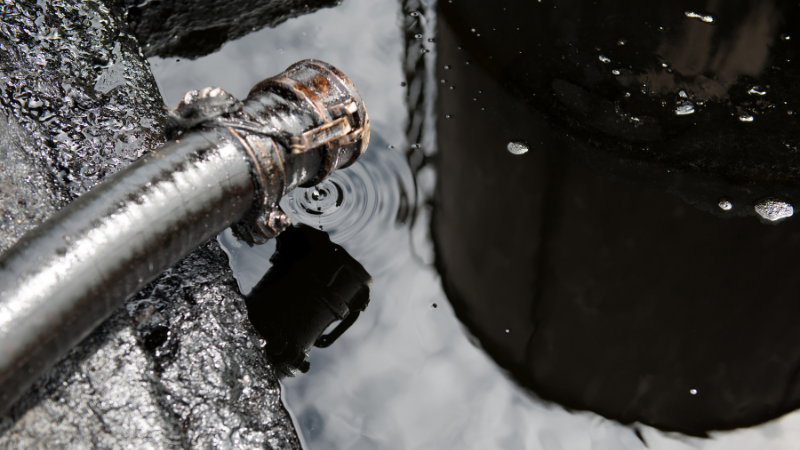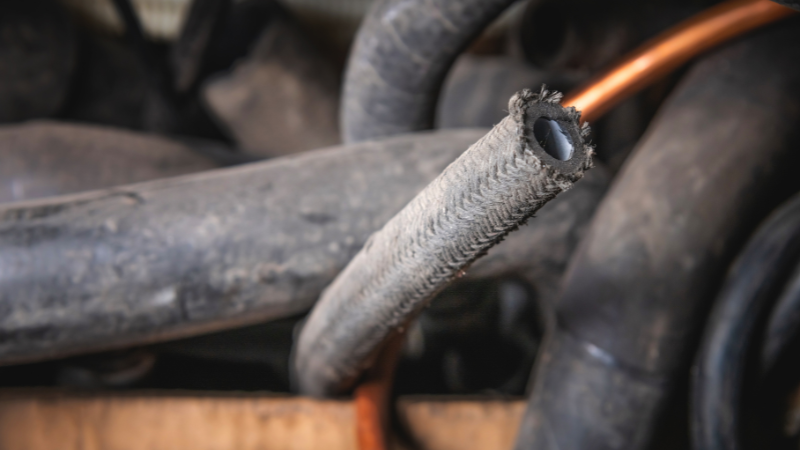Controlling Hydraulic Oil Temperature: A Guide
May 24, 2024

Hydraulic systems are an integral part of various industries, serving as the backbone of machinery used in construction, manufacturing, agriculture, and more.
These systems rely on hydraulic oil to transmit power efficiently and lubricate moving parts, ensuring smooth operation and longevity. However, the temperature dynamics of hydraulic oil play a crucial role in system performance and reliability.
In this blog post, we’ll talk about the factors influencing hydraulic oil temperature, its effects on system operation, and best practices for managing temperature fluctuations to maintain optimal performance.
Factors Affecting Hydraulic Oil Temperature
Hydraulic oil temperature refers to the operating temperature range experienced by the hydraulic fluid within a hydraulic system. The temperature of hydraulic oil can vary significantly based on several factors, these can make hydraulic oil an incredibly dangerous substance if you are inexperienced in handling it.
Ambient temperature plays a significant role, with hotter climates leading to higher oil temperatures and colder environments resulting in lower temperatures. Additionally, factors such as system load and pressure affect heat generation, as higher loads and pressures increase friction within the system, leading to elevated oil temperatures.
Furthermore, the flow rate of hydraulic fluid through the system influences its temperature. Higher flow rates can lead to increased friction and heat generation, consequently raising the oil temperature. Conversely, lower flow rates may result in reduced heat generation.
System design also impacts hydraulic oil temperature. Efficient cooling mechanisms, such as heat exchangers or cooling fans, can help dissipate heat and maintain oil temperature within acceptable limits. Conversely, inadequate cooling capacity or poor design can result in overheating, leading to decreased efficiency and potential damage to system components.
Monitoring and controlling hydraulic oil temperature is essential for ensuring optimal system performance and longevity. Excessive heat can degrade the oil, reduce lubrication effectiveness, and accelerate wear on components.
Therefore, implementing temperature monitoring systems and preventive maintenance measures is critical for preventing overheating and preserving the integrity of hydraulic systems.
Effects of High Oil Temperature
High hydraulic oil temperatures can have a multitude of adverse effects on system performance and longevity. One of the primary concerns is the reduction in lubrication effectiveness, as elevated temperatures can cause the oil’s viscosity to decrease, resulting in inadequate lubrication and increased friction between moving parts.
This can accelerate wear and tear on system components, leading to premature failure and costly repairs. Furthermore, high temperatures promote the oxidation and degradation of hydraulic oil, causing it to break down and lose its lubricating properties over time.
Degraded oil not only compromises system performance but also increases the risk of damage to critical components. In addition to lubrication issues, high oil temperatures can damage seals and gaskets within the hydraulic system.
Seals exposed to high temperatures may become brittle and prone to leakage, leading to fluid loss and potential system failure. Moreover, thermal stress on system components can weaken their structural integrity, increasing the likelihood of mechanical failure and downtime.
Overall, maintaining optimal oil temperature is essential for preserving system efficiency, reliability, and longevity.
Consequences of High Oil Temperature on Your System
Elevated oil temperature in hydraulic systems can have significant consequences on system performance. One of the primary issues is accelerated oil degradation, which can lead to a decrease in lubricating properties and increased viscosity.
As the oil deteriorates, it becomes less effective at reducing friction between moving components, resulting in higher wear rates and potential damage to system elements.
Additionally, elevated temperatures can cause seals and O-rings to degrade more rapidly, leading to leaks and loss of hydraulic pressure. Furthermore, overheating can trigger the formation of varnish and sludge within the system, impairing the functionality of valves, pumps, and other critical components.
Ultimately, these consequences can result in reduced system efficiency, increased maintenance requirements, and even system failure if left unchecked. Therefore, it is essential to monitor and control hydraulic oil temperature to mitigate these adverse effects and ensure the reliable operation of hydraulic systems.
If you were to spill any of your hydraulic fluid, this could be incredibly dangerous if your oil is too hot.
Managing Hydraulic Oil Temperature
Effectively managing hydraulic oil temperature is essential for maximising system performance and minimising the risk of temperature-related issues. Operators can implement various strategies to control oil temperature and ensure optimal system operation.
Regularly monitor oil temperature using temperature sensors or gauges installed within the system. Establishing temperature thresholds and alarms can help identify potential issues early on, allowing for timely intervention and preventive maintenance.
Additionally, schedule routine maintenance checks to inspect system components, including filters, hoses, and seals, for signs of wear or damage.
Select hydraulic oil that is specifically formulated for the operating conditions and requirements of your hydraulic system. High-quality oils with excellent thermal stability and viscosity index can withstand higher temperatures and provide better lubrication, reducing the risk of temperature-related issues.
Ensure that the hydraulic system is adequately filled with oil to facilitate proper heat dissipation and lubrication. Low fluid levels can impede heat transfer and exacerbate temperature issues, so regularly check and replenish oil levels as needed.
Install auxiliary cooling systems, such as oil coolers or heat exchangers, to help dissipate excess heat from the hydraulic oil. These systems can be particularly beneficial in high-temperature environments or applications with heavy workload demands.
Properly sized and maintained cooling systems can effectively regulate oil temperature and prevent overheating.
Consider the design and layout of the hydraulic system to optimise heat dissipation and minimise temperature fluctuations. Ensure adequate airflow around system components and avoid placing heat-generating elements in confined spaces.
Additionally, optimise system efficiency by selecting appropriately sized pumps, valves, and actuators to minimise energy losses and reduce heat generation.
Conclusion
Hydraulic oil temperature is a critical parameter that significantly impacts the performance and longevity of hydraulic systems. By understanding the factors influencing oil temperature, recognising the effects of elevated temperatures, and implementing effective temperature management strategies, operators can ensure optimal system operation and reliability.
Proactive maintenance, proper fluid selection, and the use of cooling systems are essential for controlling oil temperature and mitigating temperature-related issues.
By prioritising temperature management and adhering to best practices, operators can maximise the efficiency, reliability, and lifespan of hydraulic systems, ultimately reducing downtime and maintenance costs.
Remember to consult equipment manuals and seek professional advice when addressing temperature-related concerns to ensure the effectiveness of maintenance efforts.

Jack is the proud new owner of Pirtek Wirral. After taking over the franchise in early 2023, Jack’s leadership has already led to Pirtek Wirral winning national awards. With his expertise in all hydraulic systems, Jack is passionate to grow Pirtek Wirral into a leading franchise.
Have Any Questions?
Get in touch with our team today.
- 0151 725 6777
- help@dynamichydro.co.uk




